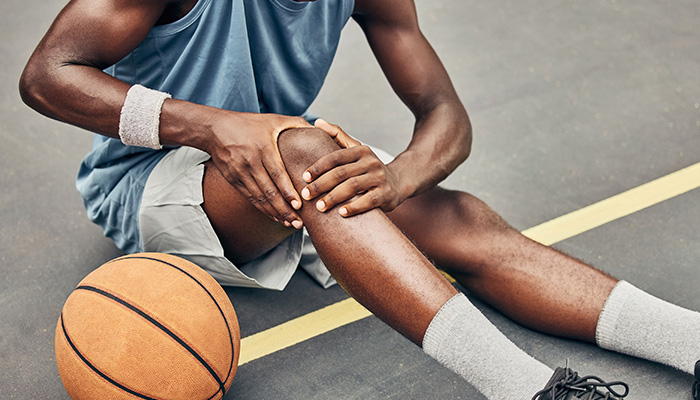In the realm of athletics, where pushing the envelope is a daily routine, sports injuries stand as a significant hurdle for athletes at all levels. From weekend warriors to professional athletes, the quest for recovery and optimal performance is ongoing. The quest for effective recovery strategies brings regenerative medicine to the forefront, offering promising avenues for healing and rehabilitation. At Krasnick Regenerative Medicine in Ann Arbor, Michigan, Dr. Robert Krasnick harnesses the potential of this innovative field to address sports-related injuries, aiming for outcomes that extend beyond symptom relief to facilitate genuine tissue repair and functionality restoration.
The Science of Regenerative Medicine
Regenerative medicine is a groundbreaking area of healthcare that focuses on repairing, replacing, regenerating, or supporting diseased or injured cells, tissues, or organs. It utilizes various techniques, including stem cell therapy, platelet-rich plasma (PRP) therapy, and prolotherapy, aiming to restore the normal function of the body. Unlike traditional treatments that may only address symptoms, regenerative medicine seeks to tackle the root cause of pain and injury, offering a more sustainable solution to athletes.
Stem Cell Therapy: Utilizes undifferentiated cells capable of transforming into specific cell types required for repairing injured tissues. Research suggests stem cells can significantly impact musculoskeletal injuries by promoting tissue regeneration and reducing inflammation (Source: “Stem Cells in Sports Injuries: The Future or Just Hype?”—a review published in the Sports Medicine journal).
Platelet-Rich Plasma (PRP) Therapy: Involves concentrating platelets from the patient’s own blood and injecting them into the injured area. Platelets release growth factors that promote healing and tissue repair. A systematic review in the American Journal of Sports Medicine highlighted PRP’s effectiveness in treating chronic tendon injuries, suggesting improved pain relief and functional outcomes compared to control treatments.
Prolotherapy: This involves injecting a dextrose solution into the injury site, stimulating the body’s healing response. While traditionally considered less mainstream, recent studies point to its potential in treating tendinopathies and joint pain, as outlined in research published in the Journal of Prolotherapy.
Common Sports Injuries Treated with Regenerative Medicine
Ligament and Tendon Injuries: Athletes frequently suffer from ligament sprains and tendon strains, which can be debilitating and lead to prolonged periods away from their sport. Regenerative medicine, particularly PRP therapy, has shown promising results in healing these types of injuries by stimulating the body’s own healing mechanisms.

Joint Injuries: Knee injuries, such as meniscus tears or ACL injuries, are prevalent among athletes and can significantly impact performance and lifestyle. Stem cell therapy, by promoting the regeneration of damaged tissue, offers a non-invasive alternative to surgery, potentially reducing recovery time and improving outcomes.
Muscle Injuries: Muscle strains or tears are another common issue athletes face. Regenerative treatments can accelerate healing, reduce inflammation, and enhance muscle strength and flexibility, getting athletes back in action faster.
Overuse Injuries: Conditions like tennis elbow or golfer’s elbow result from repetitive strain and overuse. Prolotherapy, a method of injecting a natural irritant solution into the injured area, can strengthen weakened connective tissue and alleviate pain.
Evaluating Efficacy
The efficacy of regenerative treatments in sports medicine is an area of active research. While numerous studies and patient reports highlight positive outcomes, the medical community continues to explore these treatments’ long-term effects and optimal application protocols. For example, a meta-analysis in the British Journal of Sports Medicine emphasized the need for more high-quality, randomized controlled trials to fully understand PRP therapy’s efficacy across different injury types.
The Krasnick Regenerative Medicine Approach to Sports Injuries
At Krasnick Regenerative Medicine, we understand the athlete’s mindset: the drive to excel, the dedication to training, and the frustration that comes with being sidelined by injury. Dr. Robert Krasnick leverages his extensive experience in regenerative medicine to tailor treatment plans that address the unique needs of each athlete. Our clinic employs the latest in regenerative techniques, supported by a holistic approach to patient care, ensuring that athletes not only recover from their injuries but also return to their sport stronger and more resilient.
The Path to Recovery
Healing with regenerative medicine begins with a comprehensive evaluation, including a detailed history, physical examination, and, when necessary, advanced imaging studies. This thorough assessment allows us to pinpoint the source of the injury and develop a customized treatment plan. Athletes undergoing regenerative treatments at our clinic can expect a collaborative process, where their goals, whether returning to competitive sports or enjoying recreational activities pain-free, are our top priority.
In conclusion, regenerative medicine offers a promising avenue for athletes seeking to overcome sports-related injuries. Through innovative treatments like stem cell therapy, PRP therapy, and prolotherapy, Krasnick Regenerative Medicine is at the forefront of empowering athletes to heal naturally and effectively. If you’re battling a sports injury and looking for a path to recovery that aligns with your body’s innate healing capabilities, consider the regenerative options available at our Ann Arbor clinic. Together, we can redefine what’s possible in sports injury recovery.
Dr. Robert Krasnick and the team at Krasnick Regenerative Medicine are dedicated to helping athletes achieve their highest potential. To learn more about our regenerative treatments and how they can benefit you, visit our clinic in Ann Arbor, Michigan, or contact us today. Let us guide you through your journey to recovery and back to peak performance.

